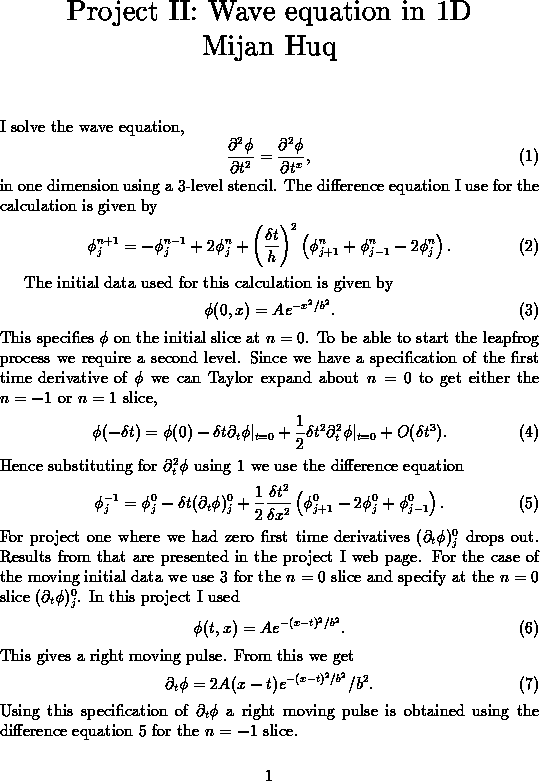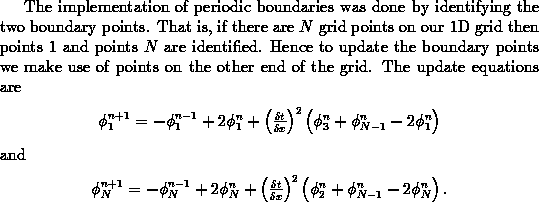

Evolution with Radiation boundaries
Given the initial data and parameters discussed earlier an evolution is
carried out to 500 steps. This corresponds to a time of 1.25 units. The pulse
moves to the right and when it hits the boundaries it moves through it as
expected.
 MPEG movie of evolution of moving pulse with radiation boundaries.
MPEG movie of evolution of moving pulse with radiation boundaries.
Radiation boundary convergence test
The graph below shows the convergence factor
as a function of time. At t=1.0 there is variation due to the boundaries of
the convergence factor. Apart from boundary effects the code is always
second order.


Evolution with Periodic boundaries
Given the initial data and parameters discussed earlier an evolution is
carried out to 500 steps. This corresponds to a time of 1.25 units. The pulse
moves to the right and when it hits the boundaries it moves through and appears
on the leftmost boundary is as expected.
 MPEG movie of evolution of moving pulse with periodic boundaries.
MPEG movie of evolution of moving pulse with periodic boundaries.
Periodic boundary convergence test
The graph below shows the convergence factor
as a function of time. At t=1.0 there is variation due to the boundaries of
the convergence factor. Apart from boundary effects the code is always
second order. Note that the variation at t=1.0 is an order of magnitude smaller
than in the radiation boundary case.
